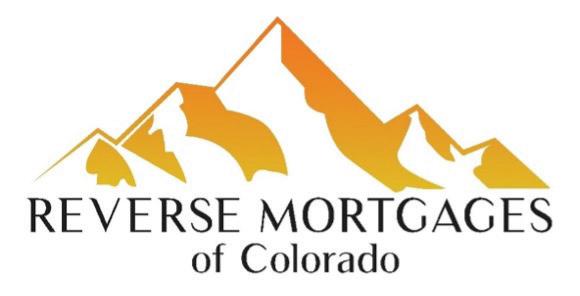












BY JOHN INGOLD THE COLORADO SUN
Lawmakers and other state ofcials have for weeks been bracing for the possibility of coming back to the Capitol later this year to deal with potential federal cuts to Medicaid likely to be included in Congressional Republicans’ stillbeing-written budget proposal. “ ere certainly are a lot of indicators that would suggest that we might end up having to come back in the event that there’s a dramatic cut to Medicaid,” state Sen. Judy Amabile, a Boulder Democrat and member of the legislature’s Joint Budget Committee, said in March, as rst reported in e Colorado Sun’s politics newsletter, e Unafliated.
Speaking to a group of health care leaders in April, Gov. Jared Polis’ budget director put it a little more bluntly. Mark Ferrandino said the state is estimating up to $1 billion in cuts to Colorado’s federal Medicaid funding under proposals being discussed in Washington, D.C..
Michelle Lucas, founder of Higher Orbits Go for Launch, has worked at NASA’s Johnson Space Center and made her reputation preparing people for space ight. She traveled the world teaching people how to live on board the International Space Station.
But the satisfaction she received from that job is nothing compared to thrill of seeing a new generation get interested in space ight.
“Don’t get me wrong, training astronauts for space was ful lling, but being able to prepare the next generation is a next level of ful llment,” Lucas said. at’s what she and her team

were aiming for April 26 and 27 at the Colorado Space Port near Watkins. e space port hosted the Go for Launch Higher Orbits event, a special STEM program, for 35 Denver-area middle and high school students.
Lucas said it’s incredibly ful lling to inspire the next generation of space enthusiasts, especially for kids that don’t have access to these kinds of opportunities.
She said she can relate.
“I’m a kid who is in love with space, from the south side of Chicago with no access to spaceinspired STEM programming,” she said.
Post-its, tape and teamwork e students learned about teamwork, communication, technology, leadership, science,
engineering and brainstorming during the two day program. eir tasks include working as teams to create a tower made of paper stable enough to support the miniature NASA Orion Capsule placed on top. Each tower was tested with a small fan to assess its strength.
Global Village Academy’s Colton Burke, Prospect Ridge Academy’s Eshaan Valles and Colorado Skies Academy students Yiri Yerikanis, and Zach Schultz worked as a team.
e group of 8th grade students brainstormed how to best build their tower, each participating with structural engineering concepts and feeding o each other for inspiration.
eir nal tower was made of Post-its, paper and some tape
with room for the Orion Capsule on top. eir project was tested for strength, and they won rst place. Not only that, but they had fun doing it. at’s the goal, Lucas said. Being able to create something that she can bring to the backyards of students across the country is so meaningful to her.
Dreams of space e impact is huge, according to Robert Ferguson from Westminster Public Schools’ Random Innovation Center. He teaches the aviation engineering pathway, including drone classes, pilot training, engineering design, aviation electronics, and aerospace.
“Just to be clear to everyone,” Ferrandino said, “if that’s the cut, we are not back lling, which means we have to make cuts both in Medicaid and other places in the state budget to deal with it.”
Medicaid is the state’s most expensive program. e agency that runs the program has an $18 billion budget for next year. More than $10 billion in that budget comes from federal funds, meaning Colorado could be facing a 10% cut in that funding if Ferrandino’s projections are correct.
Colorado contributes about $5 billion to the Medicaid program out of the state’s general fund, making it the largest source of general fund spending. When Ferrandino says the state will not back ll, he means the state won’t chip in more general fund money to make up for the possible federal cuts. ere just isn’t enough cash to do so.
LAWMAKERS, P12
BY BRIAN EASON THE COLORADO SUN
Home values across the Denver metro area largely held steady or declined in the latest tax assessment period, county assessors announced April 30, in the latest sign that Colorado’s housing market has cooled o from its pandemic fever. County tax o cials said it will be several months before they can de nitively say whether most residential tax bills will go up or down next year. at’ll depend on whether local governments raise mill levies when they set their budgets later this year and how the state’s new property tax laws play out in di erent communities.
But at least one thing’s assured: e typical homeowner won’t experience major spikes in their 2026 tax bills like they did after the last re-assessment two years ago, which led to several rounds of property tax cuts at the state level.
“If there’s a headline for us in Douglas County this year, it’s breathing a sigh of relief,” Toby Damisch, the county tax assessor, said at a news conference in Denver.
In Douglas County, the median residential value dropped 3.5% in the preliminary assessments, which re ect market values as of June 2024. at’s a night-and-day difference from this time two years ago, when residential values were up nearly 50% in Douglas County, and more than 30% in Denver.
Damisch said it was the rst time since the Great Recession he’s seen residential values fall in his county. And they could fall further in the coming months, when property owners have the chance to appeal their values.
Tax o cials pointed to a few factors to ex-
plain the dip. High interest rates and economic uncertainty have depressed home sales in recent years. And in retrospect, the June 2022 valuation came at the worst possible time for homeowners struggling with the cost of living. Home prices peaked across much of Colorado that summer, meaning tax assessors took their biannual snapshot used to determine tax bills at the absolute height of the market.
Je erson County Assessor Scot Kersgaard said his area was the only one to see an increase in residential values — and even there it was a minor 2% bump. Across the rest of the Front Range, home values held steady or dropped a few percentage points.
Nonetheless, housing a ordability remains a major challenge across the metro area. Damisch said the cost of homeownership remains “the highest it’s ever been” in Colorado, thanks to high interest rates and insurance costs. In Boulder County, where median home values are down about 1%, prices actually went up for condos and townhomes, making it harder for entry-level buyers to purchase their rst home.
JoAnn Gro , the state property tax administrator, said she won’t have numbers from all 64 counties until August, but in preliminary surveys from earlier this year, the rest of Colorado looked similar to metro Denver, with residential values mostly at or slightly down.
But that isn’t the case everywhere. In mountain communities, where housing costs are the highest, prices are still going up. Mark Chapin, president of the Colorado Assessors Association, told e Colorado Sun that median home values are up 8% in Eagle County, where he serves as the

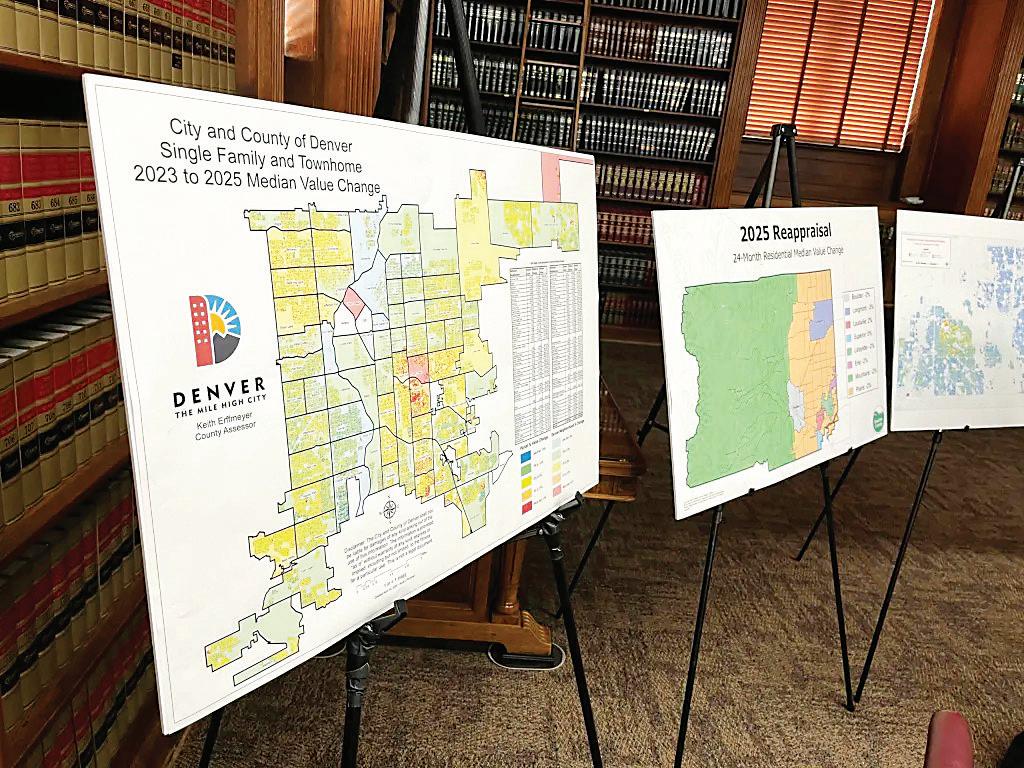
tax assessor. In Gar eld County, home to Glenwood Springs, residential values are up 14%, he said.
Along the Front Range, local governments should see tax revenue stay relatively at, assessors said. Commercial values were up across the metro area, largely o setting the declines in home values. Keith Er meyer, the Denver assessor, said growth in warehouses and other commercial properties more than made up for a downturn in the o ce sector, where vacancies are up as more people work from home.
Absent future tax hikes, at tax revenue could lead to budget cuts for many local agencies, as they grapple with in ation and declines in state and federal funding.
But county tax o cials insisted it was too soon to say what the valuation would

mean for homeowners and local governments. In a change from previous years, homeowners won’t get an estimated tax bill with their valuation notice, due to a change in state law. at will give counties time to determine if revenue is expected to grow faster than the state’s new property tax cap, requiring cuts to the assessment rate. And it will prevent homeowners from being given an estimate that turns out to be wrong when local government o cials set their mill levy rates later in the year.
“ e taxes are going to get gured out later — that’s just how it works now,” Damisch said. is story was printed through a news sharing agreement with e Colorado Sun, a journalist-owned nonpro t based in Denver that covers the state.
SATURDAY, MAY
MAY 17
BY MONTE WHALEY MWHALEY@COLORADOCOMMUNITYMEDIA.COM
Westminster’s Butter y Pavilion is playing a key role in identifying and preserving butter ies across Colorado, as the 2025 butter y monitoring season began May 3 at Castlewood Canyon State Park in Franktown.
To kick o the season, the Butter y Pavilion has released the 2024 Annual Colorado Butter y Monitoring Network report on the state of Colorado’s native butter y populations. Last year marked the 12th year of Monitoring Network as one of the nation’s fastest-growing community science programs focused on butter y conservation.
O cials say this year’s announcement comes at a critical time in butter y habitats. A new study published in Science magazine shows a 22% decline in buttery abundance across the U.S. between 2000 and 2020.
Butter y Pavilion played a signi cant role in the research, contributing Colorado-speci c data from the Monitoring Network and collaborating with nearly two dozen scientists through the “Status of Butter ies in the United States” working group, according to a Pavilion news release.
More data needed e ndings highlight the urgent need for local and national e orts to protect pollinators, one of the most vital and vulnerable components of our ecosystems, according to a news release.
“While we have a lot of great data, we
still need more for a comprehensive picture,” said Shiran Hershcovich, Lepidopterist Manager at Butter y Pavilion and co-author in the Science study, said in the news release. “ at’s where the public comes in with community science programs like (Colorado Butter y Monitoring Network), which allow us to cover more geographies and provide essential insights for conservation.”
In a press release, the 2024 Colorado Butter y Monitoring Network Report notes that 452 surveys were submitted across 69 monitoring routes in 12 Colorado counties. Reports came from 59 active monitors, including 40 new volunteers, that contributed 385.4 hours of butter y observations.
As of Oct. 15, 2024, the program had documented 144,002 individual butter ies through 4,764 surveys, totaling 4,899.8 hours of monitoring since 2013.
Participating counties in 2024 included: Adams, Arapahoe, Boulder, Broomeld, Denver, Douglas, Eagle, El Paso, Gilpin, Je erson, Larimer, and Weld.
Big growth for 2025
e Butter y Pavilion is aiming for ambitious growth of the Colorado Butter y Monitoring Network in its 13th season, according to the news release. e 2025 goals include expanding the program to 18 counties, recruiting 90 monitors, and surveying 80 sites along 90 routes. In addition, Butter y Pavilion will begin indepth analysis of its decade-long dataset to better understand trends and inform conservation strategies statewide, the news release states.
“ is is people-powered science,” said Hershcovich. “When our community gets involved, they become stewards of our environment and champions for native invertebrates.”
e Monitoring Network trains volunteers to monitor butter ies in their com-





munities from May to September. After attending a training session, monitors choose a route and walk it at least three times per season, recording every butter y they see within a six-meter radius. Volunteers also note weather conditions, time, and habitat data.
is year’s training dates and locations include three joint sessions with the Monarch Larva Monitoring Program: 9 a.m. to 4 p.m. May 3 at Castlewood Canyon State Park in Franktown, 9 a.m. to 4


p.m. May 10 at Cherry Creek State Park in Denver and 10 a.m. to noon May 17 at Lory State Park west of Fort Collins. A fourth program hosted solely by the Colorado Butter y Monitoring Network is scheduled for 10 a.m. to 2 p.m. May 18 at East Boulder Community Center. Self-paced online video training is also available. ose interested can visit and sign up here: https://butter ies.org/ research-and-conserve/butter y-monitoring/











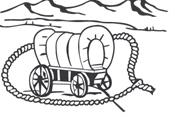










is is especially true because next year will see another tight budget, regardless of what happens at the federal level. Ferrandino described what lawmakers did this year to close a $1.2 billion budget gap as essentially punting the problem into next year.
“It is going to be a more di cult budget,” Ferrandino said in remarks at the Colorado Hospital Association’s Hospitals on the Hill, a lobbying day for health care leaders that also features informational sessions for those leaders. “We are going to have to look at cuts. I will say Medicaid … if not controlled is going to eat up the entire state budget. Which is going to mean we have to make di cult decisions in the health care space.”
e combination of these two funding crises has sent Colorado o cials and health care leaders into overdrive in the past few weeks to ght against federal cuts to Medicaid.
Earlier this month, Polis and Lt. Gov. Dianne Primavera sent a letter to Colorado’s Congressional delegation urging them to reject cuts to Medicaid. e envisioned cuts could mean a loss of 12,000 jobs, $1.3 billion in state GDP and $82 million in state and local tax revenue, the pair argued.
“Children, hardworking individuals, people with disabilities, seniors, and safety net providers are not political pawns or talking points,” they wrote in the letter. “ ese cuts would mean losing access to lifesaving care with devastating consequences.”


e Colorado Health Policy Coalition, a group of more than 80 health care organizations from across the policy spec-
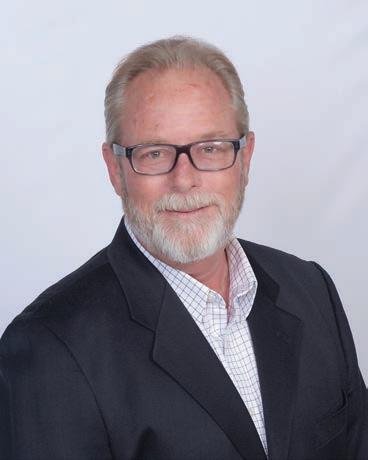
trum, followed that with its own letter opposing cuts. Just this week, the Colorado Rural Health Center released a statement criticizing proposals to cut programs that

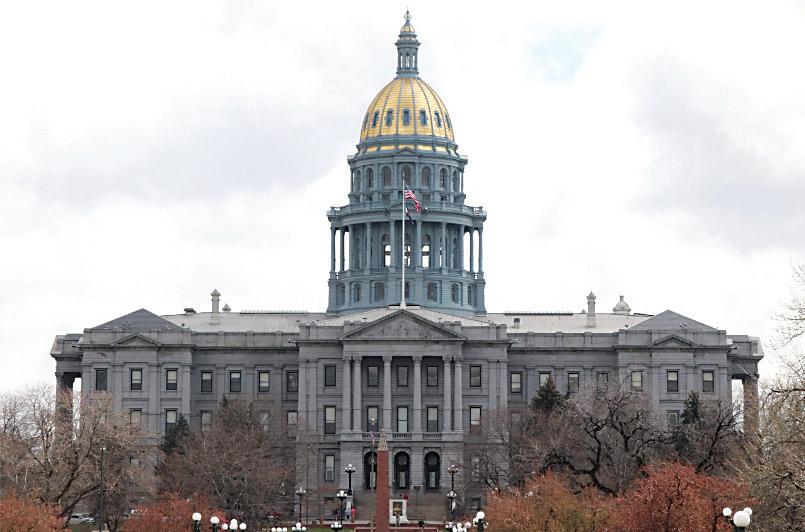
speci cally support rural health care providers.
“Cutting funding that has been a cornerstone supporting the rural health care
delivery system for decades is both short sighted and profoundly damaging,” said Michelle Mills, the CEO of the Colorado Rural Health Center, said in the statement. “Every dollar of federal funding invested in rural healthcare is an investment in thriving communities.”
e debate over health funding cuts has also created fault lines among Republicans in Washington.
Colorado U.S. Rep. Je Hurd, a Republican who represents western and southern Colorado signed onto a letter urging House leadership to preserve Medicaid. Nearly one-third of people in Hurd’s district are covered by Medicaid, the highest percentage of any Colorado representa-
Meanwhile, Colorado U.S. Rep. Gabe Evans, a Republican who represents a swing district predominantly in Adams and Weld counties, told Colorado Public Radio that cuts to Medicaid would be made only to eliminate misuse of funds and to make the program work better.
“We’re going back to cutting out the fraud, waste and abuse that actually preserves the program by making sure that we can get more resources to the people who are actually lawful bene ciaries of
If the cuts do happen, Ferrandino said state o cials do not yet have a plan for what they would slash — in part because it remains uncertain exactly which areas of Medicaid the GOP may target.
“I don’t know what we will do,” he said. “I don’t know what the legislature will do. I know we’ll be in a special session, so we’ll see all of you in July or September or August to deal with it.”
is story was printed through a news sharing agreement with e Colorado Sun, a journalist-owned nonpro t based in Denver that covers the state.
